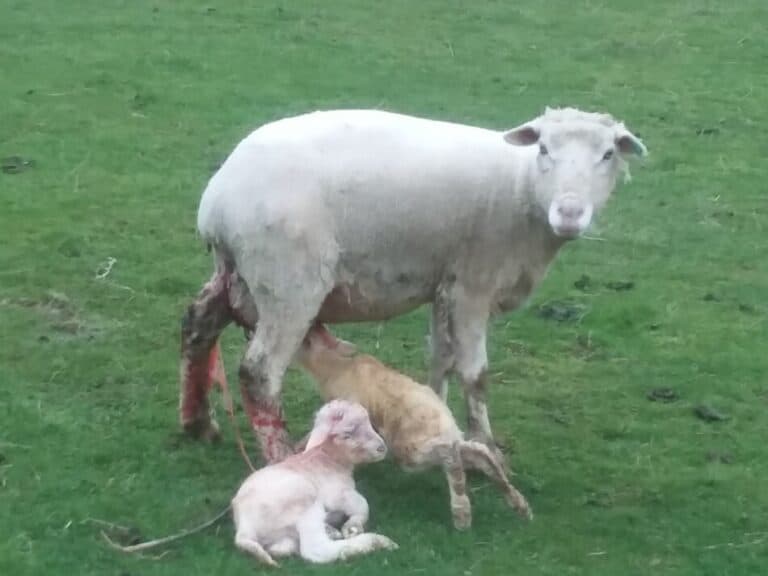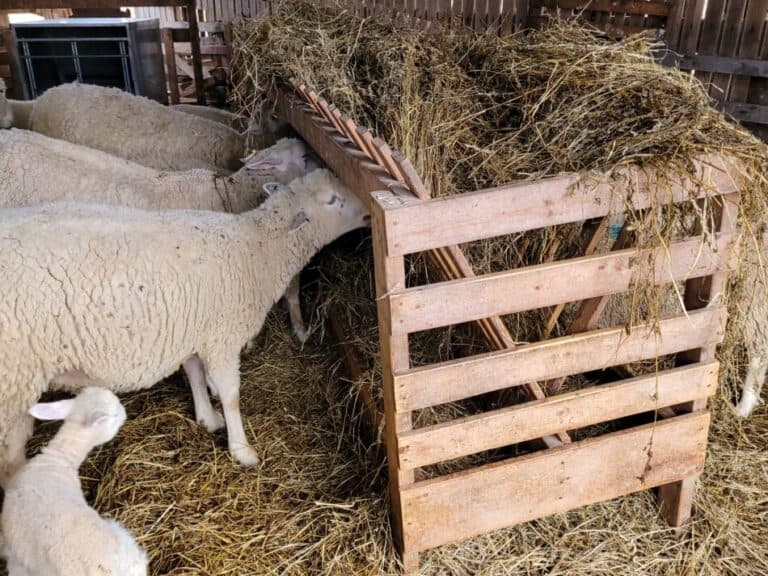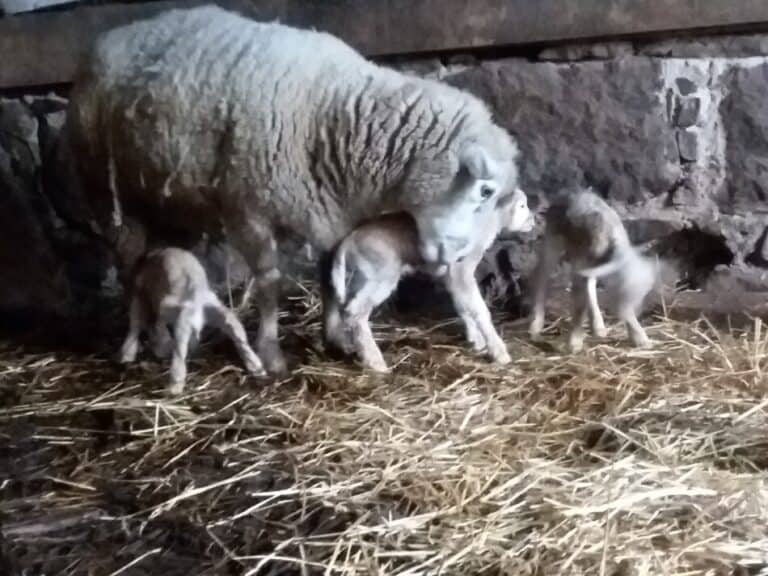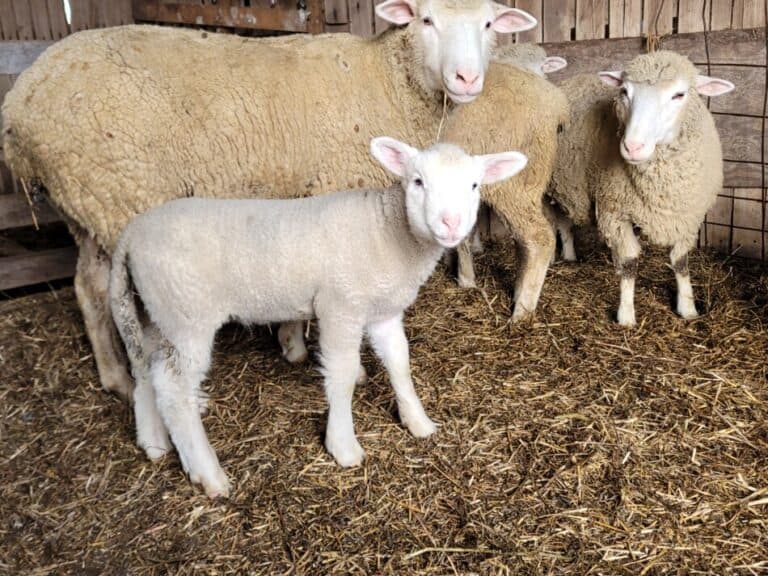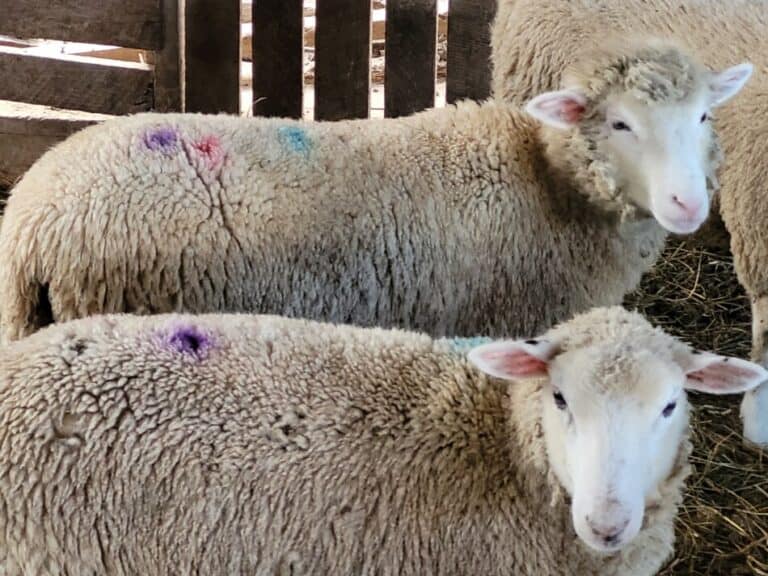6 Things Suffolk Sheep Are Known For
Suffolk sheep are the big, black headed sheep that you see on small farms and in show rings across the country. What is it that makes Suffolk sheep special and has them topping the list again and again?
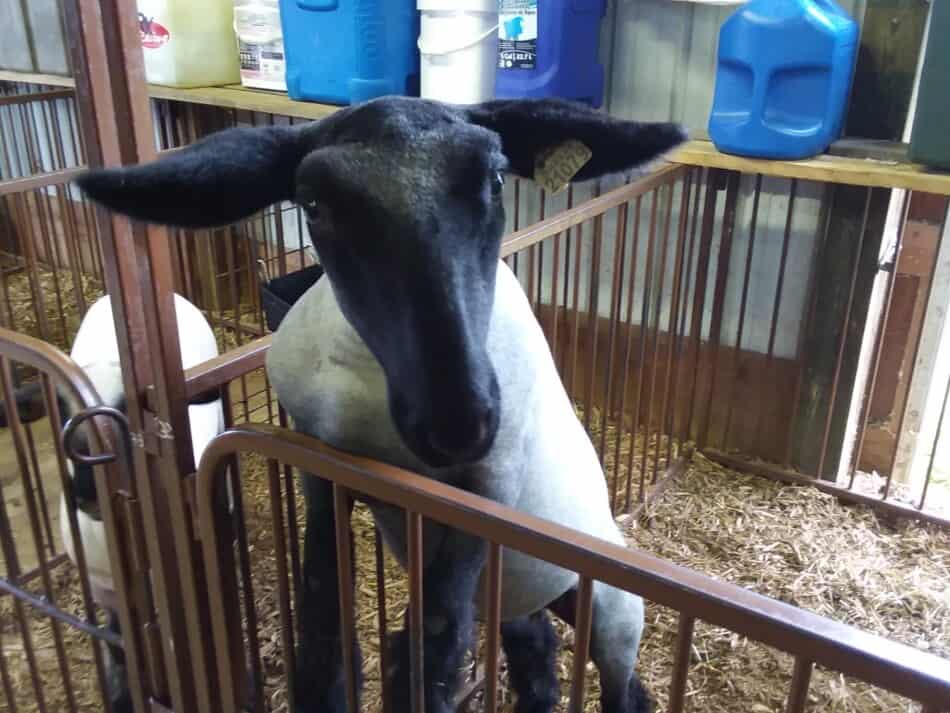
| Weight of rams | 250-350 pounds |
| Weight of ewes | 180-250 pounds |
| Appearance | tall, polled, shiny black head and legs |
| Fleece details | 2-3.5 inches long, 5-7 pounds |
| Best known for | large frame, fast growing market lambs |
| Disadvantages | require top notch feeding, short lived, not hardy |
Suffolk sheep have a larger frame
Suffolk sheep are a large sheep. They have larger bone structure which is ideal for being fed to higher weights before the lambs are marketed.
This means that Suffolk or Suffolk cross market lambs will be able to keep gaining weight to a larger total size, which gets you more pounds on the rail.
The Suffolk sheep is a superior producer of lean meat due to rapid early growth, heavy muscling, and efficient conversion of forage and other feedstuffs.
United Suffolk Sheep Association Breed Information
For example: let’s compare two market lambs, a lamb that finishes out at 90 pounds and a larger framed market lamb like a Suffolk that will easily hit 120-130 pounds.
Per head, you have another 30-40 pounds of sellable weight on the larger lamb.
Whether or not larger lambs are better for your area or your farm, is another story, but if you are looking for a larger market lamb or prefer black faced market lambs, Suffolk could be a good fit for your flock.
Best Breeds Of Sheep For Meat is my article that will give you some other breeds also known for being great meat sheep.
Suffolk lambs are fast growers
Able to use take advantage of higher energy feeds
If you are in an area with reliable access to high quality feeds, a fast growing breed like the Suffolk can take advantage of those feeds and give you more weight per lamb than a smaller framed lamb.
This is why Suffolks are popular with smaller flocks in more reliable growing conditions, this breed can and does take advantage of the great feeds to result in more pounds of lamb on a limited acreage.
The Suffolk remains No 1 for growth rate as proven by numerous independent scientific studies. This ability to grow means that Suffolk lambs are ready for market earlier resulting in reduced input costs, or also be taken to heavier carcase weights, if required.
Suffolk Sheep Society Breed Page
Lamb Creep Feeder: What is it and why use one? is my article that will give you some ideas on how to get the extra energy needed to fuel the fast growth of these type of lambs to the lambs, but not the ewes!
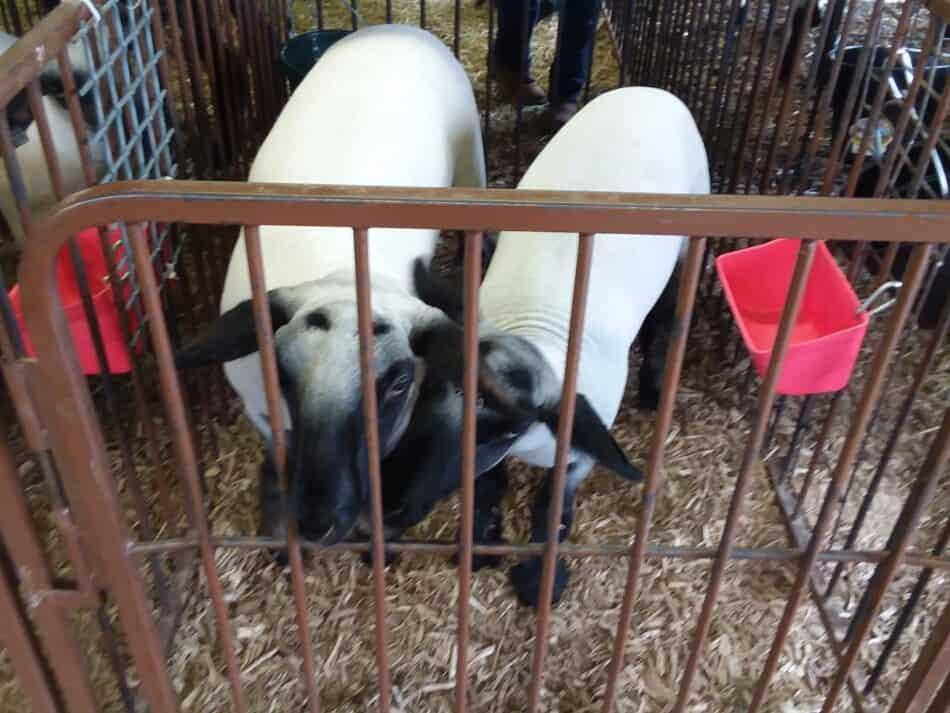
Using as a terminal sire for market lambs
Suffolk sheep are popular to use as a terminal sire for market lambs. Terminal sire means that all of the lambs will be sent to market, none will be kept as breeding stock.
As expected, Suffolk-sired lambs grew more rapidly before and after weaning and were superior in efficiency of feed conversion. Suffolk sires were also equal or superior to rams of other breeds in ewe fertility and prolificacy and lamb survival.
American Sheep Industry Study: Terminal Breeds for Use in Western Range Operations
With this type of breeding system, you would want to use the sire breed that would combine with the breed or type of your ewes to give you the market lamb that best suits your area.
This system relies on hybrid vigor to make the lambs grow more quickly, hybrid vigor is the jump in performance you get by crossing two parent breeds as compared to using parents of the same breed.
Since this plan relies on hybrid vigor for the lamb growth, there are no replacements kept back. If new breeding stock is needed, it must come from another flock to keep the cross working.
Sharp looks, shiny black head and legs
Suffolk sheep have a distinctive look, with a shiny black head and legs, they are a flashy sheep, especially when fitted up for show.
Those distinctive looks carry on in crossbred lambs, with a white face crossed to a Suffolk, you end up with a speckle faced lamb.
Suffolks are a premier meat sheep where ever they are raised, but there are slight differences in the preferred type of Suffolk depending upon where you live.
From what I can tell, the British Suffolk has kept more of the Southdown body type, just as a larger sheep, so the British Suffolks have a more substantial body on a bit shorter frame.
Contrast that with the more flashy leggier Suffolk that seems to be preferred as the American Suffolk type of choice.
I attribute that to the emphasis on showing especially for market lambs, but whatever the cause, if you look at them side by side, you’ll see a noticeable difference in structure.
As to which one is better, well that depends on what you need and what you are hoping to do with your flock.

Market lambs especially fair lambs
At least in my part of the world, Suffolks dominate the market lamb winnings, both at the local fairs and the larger state and regional shows. Nothing else really compares.
As far as the commercial market for market lambs, Suffolks tend to do well there, too. They are one of the breeds that can get a lamb to the larger weights, easily over 120 pounds.
For buyers who want a larger carcass with larger cuts, but still be buying a lamb (not an adult sheep) these guys are tough to beat.
Suffolks compare well with more maternally focused breeds
I have to admit, in my area, folks who raise Suffolks are raising them for larger framed market lambs and many also like to show, so from what I see Suffolks are a meat focused breed.
That is true, but not the entire picture. The data shows that for many farmers Suffolks are preforming just as well as other breeds that you think of as more maternally focused. I was surprised.
To me, Suffolks are a stand out meat animal, but not so well known for mothering and apparently that is wrong thinking on my part. The data bears out that Suffolks are raising as many lambs as other breeds.
Where is this data? Ontario Ministry of Agriculture, Food and Rural Affairs has Choosing Breeds for Producing Profitable Market Lambs which includes multiple breeds on their charts.
These charts cover lambs born, lambs weaned, average daily gain, birth weights and adjusted weights, with Suffolks holding strong in just about every category.
I have seen similar results from folks who put together the data and compared Suffolk performance as a commercial ewe with other more commonly used white faced breeds, this is just the first one I found.
Disadvantages of Suffolk sheep
While Suffolk sheep are quite amazing animals, especially for anyone looking to raise a larger market lamb, they are not perfect for all situations or all farms.
Suffolk sheep are growth machines, which is, believe it or not, a potential disadvantage. All that rapid growth requires plentiful feed and a non stop supply of it. Are you willing to provide this?
When the pastures don’t grow well for the season or feed prices go up, a flock of high energy requirement sheep like Suffolks will be more expensive to keep than a flock of lower performers.
The second disadvantage of Suffolks is that they seem to be fairly short lived sheep. This is a common trade off in the animal kingdom (fast growth vs longevity), but it’s a trade off that you should be aware of.
